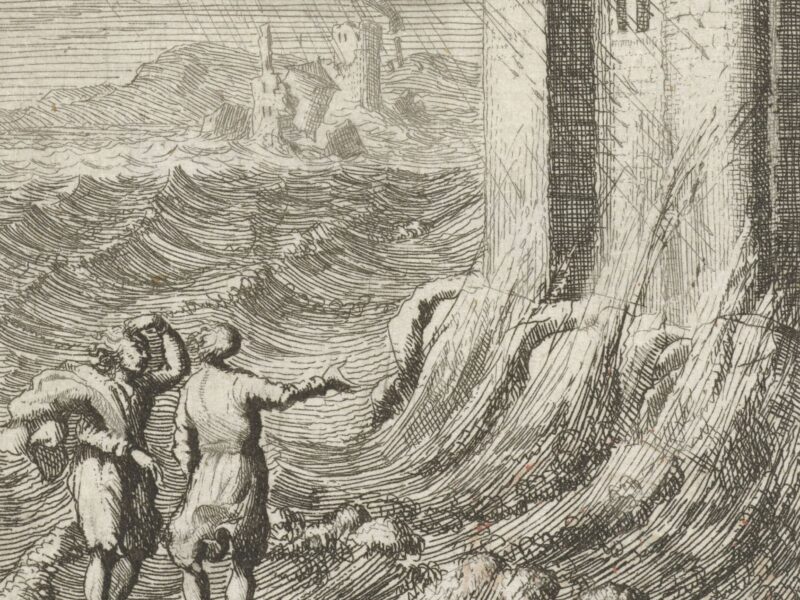
Resurrection Appearances – Mary Magdalene
1.7k
Readings: Matthew 28:1-10; Mark 16:9-11; John 20:11-18
The Christian faith is not predicated on an empty tomb. That alone would be insufficient to rule out the various conspiracy theories which began to circulate immediately (e.g. Mt. 28:11-15). The natural response to the empty tomb was puzzlement, perturbation, and even tears. There seems to be only one exception: ‘the disciple whom Jesus loved’, upon entering the empty tomb, ‘saw and believed’ (Jn. 20:8). Indeed, blessed are those who have not seen Jesus and yet have believed! (cf. Jn. 20:29) But if this disciple believed so readily, it is not because he was quicker at reading the signs or understanding the Scriptures; it can only be that his intimate love for Jesus enabled him to see the truth at a deeper and more personal level.

So the empty tomb – an external shell – is no guarantee of the Resurrection. No, it is only a personal encounter with the Risen Christ, recognised in love, that convinces us of the news that seems too good to be true: that Christ has conquered death. Thus it is appropriate, as we begin our series on the Resurrection appearances, to look first at Mary Magdalene, the first person to behold the Risen Lord, to touch him, and to tell the other disciples the good news (hence her traditional appellation as the Apostle of the Apostles).
As usual, the Gospels select and highlight different details of the historical events, whether it is the names of other women accompanying her to the tomb (Mary, the mother of James; Joanna; Salome), or various supernatural occurrences. But it is John’s account that is particularly rich regarding Mary Magdalene. Three times she bewails the absence of Jesus’ body: ‘they have taken my Lord away’. After alerting the disciples to the empty tomb, she stands outside, weeping.
Into her distress, loneliness and fearfulness, the Risen Jesus gently comes to bring light. It is dawn on Sunday, the first day of the New Creation. She confuses him for the ‘gardener’, which recalls God walking in Eden; and he is probably naked, like a second Adam (cf. 1 Cor.15:22, 45). This non-recognition of the Risen Jesus by his disciples is a recurring theme: there is something about his risen body that is different. It is foolish to speculate on what exactly he looks like (cf. 1 Cor. 15:35-6); but we know he has a transfigured, glorious, imperishable body (1 Cor. 15:42-4).

Simply by calling her name, ‘Mary’, Jesus now communicates his loving presence. No wonder Mary embraces him (or just his feet: Mt 28:9), no doubt still weeping as she struggles to contain her joy. But this is not a moment to savour: it is just the beginning. ‘Don’t be clinging onto me’, Jesus (literally) tells her. Although diverse interpretations have been given of this, the most convincing is that John the Evangelist is keen to emphasise that every Christian has equal access to the Risen Christ. Jesus and the Father make their home in every Christian (Jn 14:22-3). If Mary (and the other disciples) were physically close to Jesus, this was no special privilege, no more direct access, than what we today enjoy. We can all see Jesus, touch Jesus, taste Jesus – above all in the Eucharist (cf. 1 Jn. 1:1; Jn. 6:56-7). John seems to present the death, resurrection and glorification of Jesus as a single great event, completing his elevation to the Father (cf. Jn. 12:32-3). So Jesus points Mary ahead to the Ascension (Jn. 20:17), because only when he is glorified will he send the Holy Spirit (Jn. 7:39; 16:7).
The final element of this encounter is the most resonant for Dominican spirituality. Instead of clinging alone to the Risen Jesus, we (like Mary) are told: Go and tell my brothers! (Jn. 20:17) The news of the Resurrection is so good, so necessary for others to hear, that we cannot possibly keep it to ourselves. The Dominican image of the water pipe – which freely dispenses goodness, rather than storing it like a bowl – is highly relevant here. As St Dominic himself told the brethren, ‘hoarded grain goes bad’. How wonderful and appropriate, then, that Mary Magdalene – the first to encounter the Risen Lord – is a patroness of the Order of Preachers.


